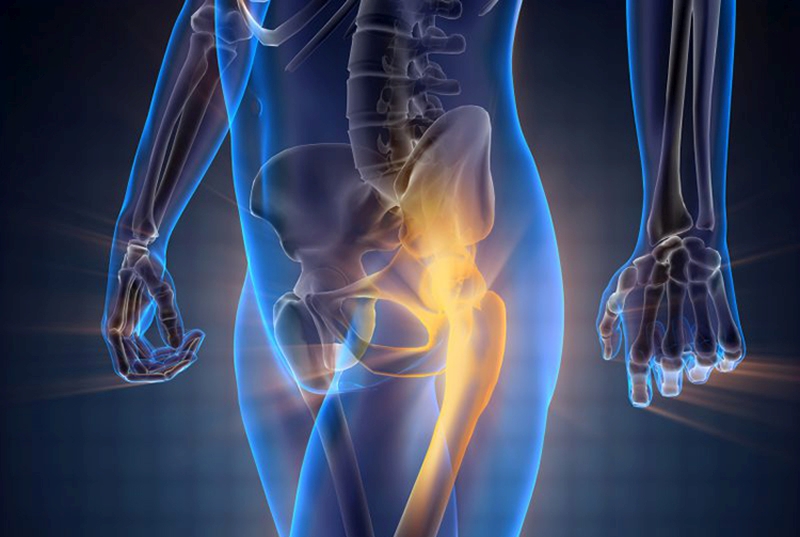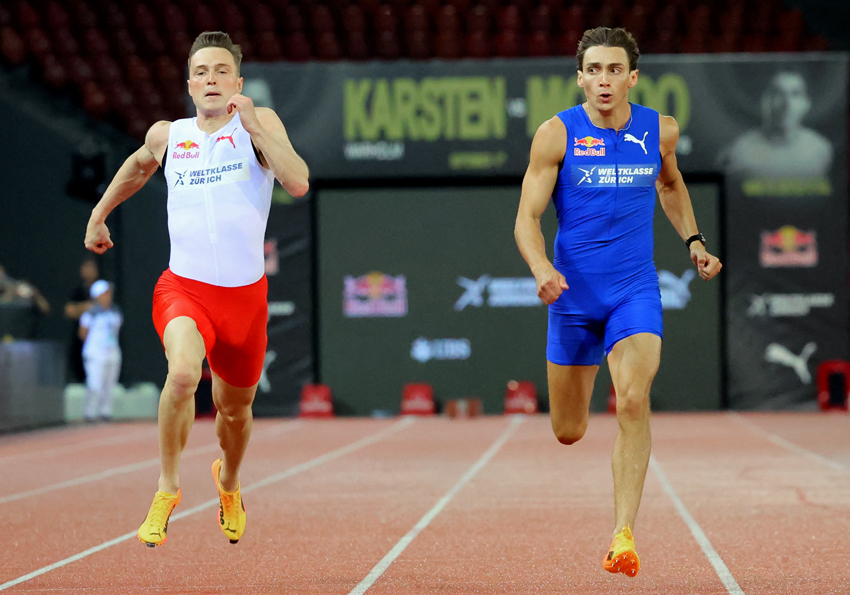Of course, running and cycling preserve leg muscle tissue, and studies have shown that running about 20 miles per week enhances bone density. Unfortunately, running has little impact on upper-body muscle mass, and scientific studies have shown that runners who log 40-75 miles per week actually may have decreased bone densities in their upper spines, shoulders and ribs, compared to sedentary individuals.
Since ageing leads to bone and muscle loss, and since running offers an incomplete protective effect (and a potentially negative effect for the upper part of the body), many exercise experts recommend that older athletes include resistance training along with their regular aerobic workouts. After all, weight training is an almost foolproof way to burgeon bone and muscle mass.
To see which plan - aerobic activity alone or aerobic activity plus strength training - is better for overall skeletal and muscular health, scientists at East Tennessee State University recently tested 43 healthy individuals who were all 55 years of age or older. Twenty-three of the subjects worked out three times per week for 30 minutes per session. Actual exercise consisted of walking vigorously on a treadmill, stair climbing or bicycling, with heart rates at 65-85 per cent of maximum during all of the workouts.
The other 20 exercisers performed aerobic activities (walking, stair climbing, bicycling) for only 15 minutes per day and spent the rest of their workout time strength-training all of their major muscle groups using weight machines. Resistance was always set at 5065 per cent of one repetition maximum - the greatest amount of weight which could be lifted successfully one time.
After four months, bone density (averaged over the whole body) and lean muscle mass increased significantly in the group which combined aerobic activity with weight lifting but didn't improve for the athletes who only engaged in aerobic exercise. In addition, the density of the 'femoral neck' - a part of the femur which links the straight shaft of the femur with the actual hip-joint socket - advanced for strength-trained athletes but stayed constant in the aerobic group. This is particularly important for older individuals, since the femoral neck is a frequent site of fractures.
Neither group was able to lift the density of the lumbar vertebrae, and each group improved the ability to do sit-ups and push-up by similar amounts. Although weight training is sometimes viewed as 'risky' for older athletes, none of the weight trainers was injured during the four-month study. Overall, a programme of aerobic activity plus strength training was better than aerobic exercise alone in terms of improving the integrity of the skeletal and muscular systems. As the researchers put it, 'We recommend that healthy people over the age of 55 years enrol in a combination of aerobic and weightlifting exercises'.
('Are Aerobic Exercises as Beneficial on the Musculoskeletal System as Weight-Lifting Exercises in Subjects 55 Years of Age and Older?' Journal of Aging-and-Physical-Activity, vol. 1(1), October 1993)
Why the muscles shrink with age - and what to do about it
Most peoples' muscles reach their maximum size during their 25th year of life, grow smaller by about 10 per cent between the ages of 25 and 50, and then shrink by 45 per cent over the next three decades. Why does so much muscle tissue disappear, and why does the degeneration accelerate after a half-century?New research from Sweden has the answer. The primary reason for the sinew reduction is that the total number of cells in any particular muscle stays pretty constant until the age of 30 but then begins a steady decline. The fall-off is slow at first but increases dramatically after the age of 50. For example, if one of your muscles consisted of 100 cells (fibres) when you were 30, the muscle would probably still contain 90 95 fibres 20 years later, but the 'fibre count' would plummet to only 50-55 when you became an octogenarian.
Individual muscle cells in your body can be either type 1 ('slow-twitch') fibres, which contract slowly but have great endurance potential, or type 2 ('fast twitch') fibres, which contract quickly and powerfully but have little endurance. A decrease in the size of type 2 fibres plays a role in the muscle-shrinking process, with individual fast-twitchers shrivelling by about 25-30 per cent between the ages of 20 and 80. However, this loss is somewhat compensated for by the steadfastness of type 1 ('slow-twitch') muscle cells, which either remain unchanged in size or can expand by up to 20 per cent in individuals who remain very physically active as they get older.
What causes the fairly dramatic loss in muscle-cell numbers? Over time - and especially after the age of 50 - 'motor nerve cells' in the spinal cord begin to deteriorate at a steady rate. By means of their long arms, which spread outward from the spinal cord like the tentacles of an octopus, the motor nerve cells are normally in close contact with muscle cells. The motor nerves' key function is to 'tell' muscle fibres when to contract during physical activity, but the connection between motor nerves and their associated muscle cells is also necessary to keep the muscle fibres alive. As motor nerve cells die, the muscle cells to which they are attached also bite the dust.
Fortunately, there's a positive side to the story. People who participate in resistance training don't necessarily halt the fibre-death process, but they can stop and even reverse the tendencies of their type 2 cells to grow smaller. Although the number of muscle cells declines, type 2 (and sometimes even type 1 ) fibres may get larger as a result of strength training, leading to a potential advancement - instead of a loss - of total muscle tissue in the body. As a fringe benefit, resistance training in older individuals seems to increase the number of small blood vessels around muscles by up to 15 per cent, potentially increasing endurance capacity.
Since the overall process of muscle atrophy picks up steam after the age of 50, strength training for people over 50 is especially critical. Fortunately, it's never too late. Research demonstrates that even individuals over the age of 80 can fortify their muscles by participating in regular strength-training workouts.
('Ageing and Human Muscle: Observations from Sweden': Canadian Journal of Applied Physiology, vol. 18(1),pp2-18, 1993)











